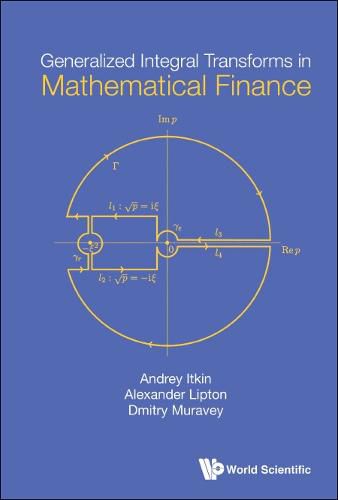Readings Newsletter
Become a Readings Member to make your shopping experience even easier.
Sign in or sign up for free!
You’re not far away from qualifying for FREE standard shipping within Australia
You’ve qualified for FREE standard shipping within Australia
The cart is loading…






This title is printed to order. This book may have been self-published. If so, we cannot guarantee the quality of the content. In the main most books will have gone through the editing process however some may not. We therefore suggest that you be aware of this before ordering this book. If in doubt check either the author or publisher’s details as we are unable to accept any returns unless they are faulty. Please contact us if you have any questions.
This book describes several techniques, first invented in physics for solving problems of heat and mass transfer, and applies them to various problems of mathematical finance defined in domains with moving boundaries. These problems include: (a) semi-closed form pricing of options in the one-factor models with time-dependent barriers (Bachelier, Hull-White, CIR, CEV); (b) analyzing an interconnected banking system in the structural credit risk model with default contagion; © finding first hitting time density for a reducible diffusion process; (d) describing the exercise boundary of American options; (e) calculating default boundary for the structured default problem; (f) deriving a semi-closed form solution for optimal mean-reverting trading strategies; to mention but some.The main methods used in this book are generalized integral transforms and heat potentials. To find a semi-closed form solution, we need to solve a linear or nonlinear Volterra equation of the second kind and then represent the option price as a one-dimensional integral. Our analysis shows that these methods are computationally more efficient than the corresponding finite-difference methods for the backward or forward Kolmogorov PDEs (partial differential equations) while providing better accuracy and stability.We extend a large number of known results by either providing solutions on complementary or extended domains where the solution is not known yet or modifying these techniques and applying them to new types of equations, such as the Bessel process. The book contains several novel results broadly applicable in physics, mathematics, and engineering.
$9.00 standard shipping within Australia
FREE standard shipping within Australia for orders over $100.00
Express & International shipping calculated at checkout
This title is printed to order. This book may have been self-published. If so, we cannot guarantee the quality of the content. In the main most books will have gone through the editing process however some may not. We therefore suggest that you be aware of this before ordering this book. If in doubt check either the author or publisher’s details as we are unable to accept any returns unless they are faulty. Please contact us if you have any questions.
This book describes several techniques, first invented in physics for solving problems of heat and mass transfer, and applies them to various problems of mathematical finance defined in domains with moving boundaries. These problems include: (a) semi-closed form pricing of options in the one-factor models with time-dependent barriers (Bachelier, Hull-White, CIR, CEV); (b) analyzing an interconnected banking system in the structural credit risk model with default contagion; © finding first hitting time density for a reducible diffusion process; (d) describing the exercise boundary of American options; (e) calculating default boundary for the structured default problem; (f) deriving a semi-closed form solution for optimal mean-reverting trading strategies; to mention but some.The main methods used in this book are generalized integral transforms and heat potentials. To find a semi-closed form solution, we need to solve a linear or nonlinear Volterra equation of the second kind and then represent the option price as a one-dimensional integral. Our analysis shows that these methods are computationally more efficient than the corresponding finite-difference methods for the backward or forward Kolmogorov PDEs (partial differential equations) while providing better accuracy and stability.We extend a large number of known results by either providing solutions on complementary or extended domains where the solution is not known yet or modifying these techniques and applying them to new types of equations, such as the Bessel process. The book contains several novel results broadly applicable in physics, mathematics, and engineering.